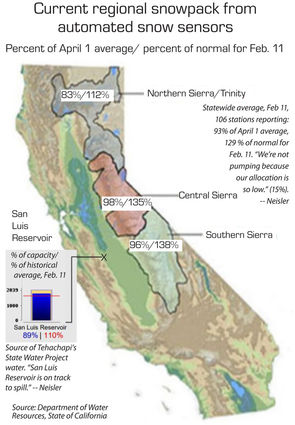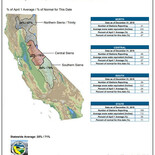Grand Jury: Tehachapi water district 'state of the art'
The Forde Files No. 184
February 16, 2019
The Special District Committee of the 2018-19 Kern County Grand Jury has given the Tehachapi-Cummings County Water District (TCCWD) accolades, calling the district "state of the art" in its report title.
District Manager Tom Neisler said the Grand Jury committee included some technologically savvy members.
"We spent 30 hours with these people, and they asked a lot of informed and detailed questions," he said. "They are astute observers. I was really happy with the result. We need to have good people looking at what we do."
The investigation, he said, "allowed us to look at our operation from an informed outsider's perspective. Iron sharpens iron and we believe that this review will benefit our district moving forward. The report highlights the visionary leadership of our board and the work of our team."
The report will be presented to the water district board at its Feb. 20 meeting.
As Grand Jury reports are structured, most of the five-page document summarizes the background, history and facts about the water district. At the end, in the "Recommendations" section where the hammer comes down on lesser well-run agencies, the Grand Jury committee listed three proposals.
The recommendations, Neisler said, referred to matters on which the water district has been working, and that the insight from the Grand Jury supports the district's momentum.
"They didn't tell us anything we didn't know," Neisler said. "It was a verification of what we are doing."
Recommendation No. 1 was: "The TCCWD should continue to explore all opportunities to purchase property in the Cummings Basin for increasing the Water District's recharge capacity."
Neisler said the recommendation is in accord with the district's strategic plan.
"The long-term goal of the district is that the Cummings Valley and Tehachapi basins have adequate recharge capacity," Neisler said. [Recharge is when water is spread in ponds so it can percolate into the earth and add to the store of ground water]. The district is investigating the purchase of more land for recharge purposes.
The district has two recharge ponds in Cummings Valley – the largest is 19 – acres near the Grimmway organic shed at Cummings Valley Blvd. and Bear Valley Road; another pond is southwest of that location. The district spread 1,500-acre-feet of water on the 19 acres last year.
"That's a tremendous amount of water," Neisler said. "There's a huge bulge of water underground, and it takes decades to disperse. An alternate to the west would be better for the health of the basin."
With more water underground, he said, well water is more readily accessible – at 100 feet rather than 200 feet, as an example – and everyone saves money in pumping costs.
"Raising levels uniformly is our goal," he said.
Recommendation No. 2 was: "The vibration analysis program for critical rotating machinery should become an integral part of a preventive maintenance program for the TCCWD."
Translation – Closely monitor the harmonic levels of the high-torque, high-horsepower engines that pump the water more than 3,000 feet up the hill so they don't interfere with each other.
Different parts of the big pumping engines vibrate at different harmonic frequencies, Neisler explained. If those frequencies – measured in vibration and amplitude – were to coincide, "bad things happen" – like what happened to the Tacoma Narrows Bridge in 1940. The goal is to address problems, such as wearing on the bearings and seals, before they become critical. "If we lose a pump it would cost us $75,000 and we wait six months for a new one to be built," Neisler said.
Recommendation No. 3 was: "Implement a computerized work order and backlog system to include building a database for performing routine repairs and scheduling preventive maintenance activities."
All work, service and repair data will be incorporated into the district's geographic information system, Neisler said.
Snowpack
While the snowpack in the Sierras is expected to be 140 percent of normal after this weekend, water district allocation from the State Water Project remains at 15 percent. The initial allocation was 10 percent at the end of November, and Neisler anticipated that the second allocation at the end of January would be a minimum of 25 percent, perhaps as much as 45 percent, but the state allotted 15 percent. "All the data indicates it should be higher. With a different governor, nobody knows what to anticipate. Fifteen percent is not close to meeting our needs," Neisler said.









